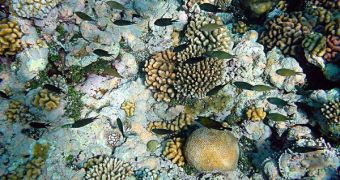Researchers from the University of California in Santa Barbara (UCSB) National Center for Ecological Analysis and Synthesis (NCEAS), led by experts Kimberly Selkoe and Benjamin Halpern, have recently published a new scientific study in the journal Coral Reefs, in which they detail possible methods of ensuring that the world's most sensitive coral reefs are protected against human activities and global warming. The research offers valuable insight into how environmental changes affect them.
“Our maps of cumulative human impacts are a powerful tool for synthesizing and visualizing the state of the oceans. The maps can aid in zoning uses of the oceans in an informed way that maximizes commercial and societal benefits, while minimizing further cumulative impact,” Kimberly Selkoe, who also works for the University of Hawaii's (UH) Hawaii Institute of Marine Biology, explained.
Halpern said that the reason why Bush declared in 2006 the Northwestern Hawaiian Islands a National Monument was “in part because it is one of the last places in the oceans that have not been heavily altered by human activities. Despite the islands' extreme isolation, however, humans are already significantly impacting this area. Many of the key threats, such as those associated with climate change, are not mitigated with Monument designation.”
“The Papahanaumokuakea Marine National Monument is a crown jewel in the national and international array of marine protected areas, designed to preserve the ecosystems of these isolated islands. This study is an important effort to assess and predict human effects on the oceans. It shows how far-reaching human influences are, and will serve as a baseline in efforts to prevent and mitigate future harm,” Phillip Taylor, a representative from the Division of Ocean Sciences, a subsidiary of the National Science Foundation, added. The NSF funded the latest research in the Hawaii coral reefs.
“With the scientific justification provided by our study, the managers of the Monument have an opportunity to make addressing the worst threats a top priority. By updating the map of cumulative impacts through time, success of management plans in reducing impacts can be measured, and permits for new uses can be evaluated in the context of how they add to these impacts,” Selkoe concluded.

 14 DAY TRIAL //
14 DAY TRIAL //